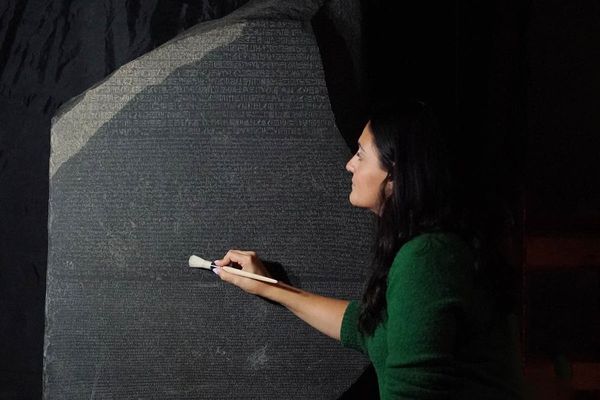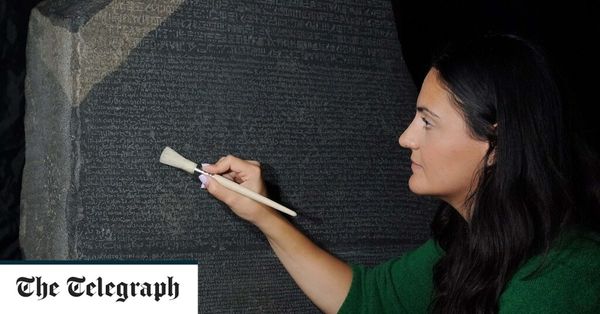
This week’s 200th anniversary of the decoding of the Rosetta Stone is generating a rare level of patriotic excitement. A celebration is under way in Egypt, which has been petitioning for the return of the stone. A summer of love for its decoder, Jean-François Champollion, culminates in France this week with the opening of an exhibition at the Louvre’s satellite museum in Lens. Meanwhile, the British Museum – where it has lain in state since docking on British shores – is gearing up for its own blockbuster exhibition.
Yet the arrival of the “very curious stone” in the UK in 1802 warranted only the briefest of mentions in the London press, which reported that it was among a shipload of Egyptian antiquities collected by the French army that had become “the property of the conquerors”. These were spoils of a war, not against the Egyptians but against Napoleonic forces, signed over under the Treaty of Alexandria.
The stone had been discovered near the town of Rosetta, now Rashid, in the Nile delta just three years earlier. Of the three scripts with which it was inscribed – Greek, Demotic and hieroglyphic – only Greek was comprehensible; it would take another two decades for Champollion to have the eureka moment that would not only make the stone into one of the world’s most famous artefacts, but would add a new definition to the English language dictionary. Rosetta Stone: breakthrough or discovery that provides crucial knowledge for the solving of puzzles or problems.
In its metaphorical sense, the stone became a calling card for the science of code-breaking: and it is in this, rather than any quality intrinsic to the object itself, that its magic lies. Champollion’s decoding of a really rather dull decree by a council of priests, affirming the royal cult of the 13-year-old Ptolemy V, provided a key to the puzzle of hieroglyphics, and thereby opened out a whole new vista in the study of ancient Egyptian culture.
However, scientific breakthroughs are hardly ever the result of a single moment of inspiration, and Champollion’s was no exception. Several hieroglyphic characters had been identified by Arab scholars as far back as the 10th century. Meanwhile, Thomas Young, a doctor and physicist famously described as “the last man who knew everything”, worked out that sound played a role (alongside pictograms and idiograms), with a series of hieroglyphs sounding out the name Ptolemy. Though Young’s findings didn’t go any further, he published them in the Encyclopaedia Britannica in 1819, so they would have fed into the French scholar’s thinking.
Through LGBTQ+ tours, which are shortly to recommence, the British Museum also recently began to honour another contributor to the stone’s history: William John Bankes, a wealthy gay Egyptologist who installed an obelisk on his Dorset estate and was early to suggest that the three texts on the Rosetta Stone might all say the same thing.
The anniversary should not just be seen as the story of one brilliant code-breaker and a broken slab of granodiorite, but as a chance to celebrate the collaborative genius of cryptography itself across continents and centuries.
• This article was amended on 3 October 2022. The third script inscribed on the stone is Demotic, not Coptic as stated in an earlier version.










